Are you curious about the different types of seaweed to eat? Look no further!
This article will explore the edible seaweeds available, including nori, kombu, wakame, dulse, and hijiki. From their distinct flavors to their nutritional benefits, you will understand these seaweeds comprehensively.
So, get ready to dive into the world of seaweed and discover which varieties are perfect for your next culinary adventure.
Types of Seaweed to Eat Key Takeaways

- Nori and Kombu are types of seaweed commonly used in Japanese cuisine and are packed with essential nutrients like vitamins A, C, and E, as well as minerals like iodine, calcium, and potassium.
- Wakame is another edible seaweed rich in essential vitamins and minerals, including vitamin C, calcium, and iron.
- Dulse is a red seaweed high in vitamins, minerals, and antioxidants and can be used in various dishes.
- Hijiki is a brown seaweed rich in essential minerals such as calcium, iron, and magnesium and can be used in salads, soups, and stir-fries.
1. Nori
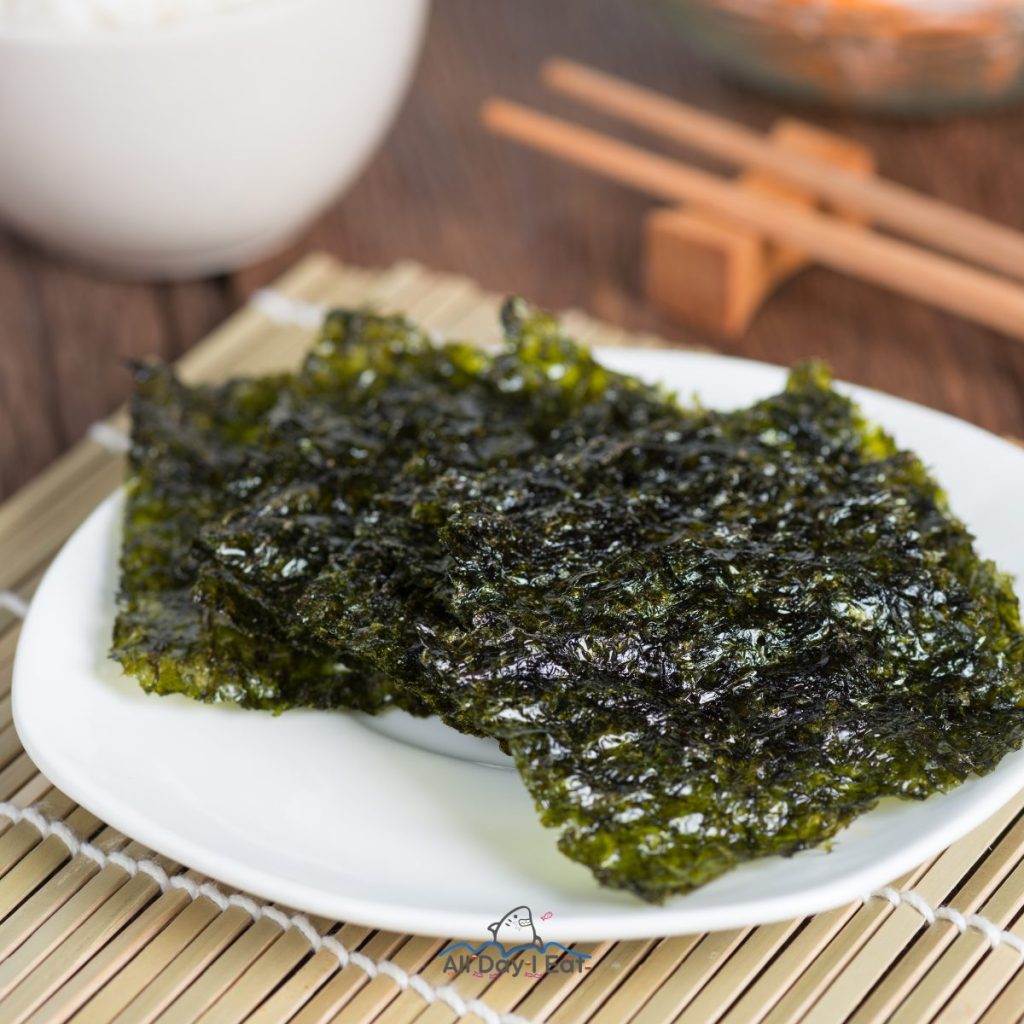
If you’re looking for a versatile and nutritious type of seaweed to incorporate into your meals, nori is an excellent choice.
Nori, scientifically known as Porphyra, is a red algae commonly used in Japanese cuisine, especially in sushi rolls. It’s widely available and has a distinct flavor and texture.
Nori contains essential nutrients, including vitamins A, C, and E, and minerals like iodine and iron. It’s also a great source of antioxidants, which can help reduce inflammation and protect against chronic diseases.
Nori is low in calories but high in fiber, making it a healthy option for those looking to manage their weight.
It can be enjoyed in various ways, such as in salads, wraps, or simply roasted as a snack.
2. Kombu
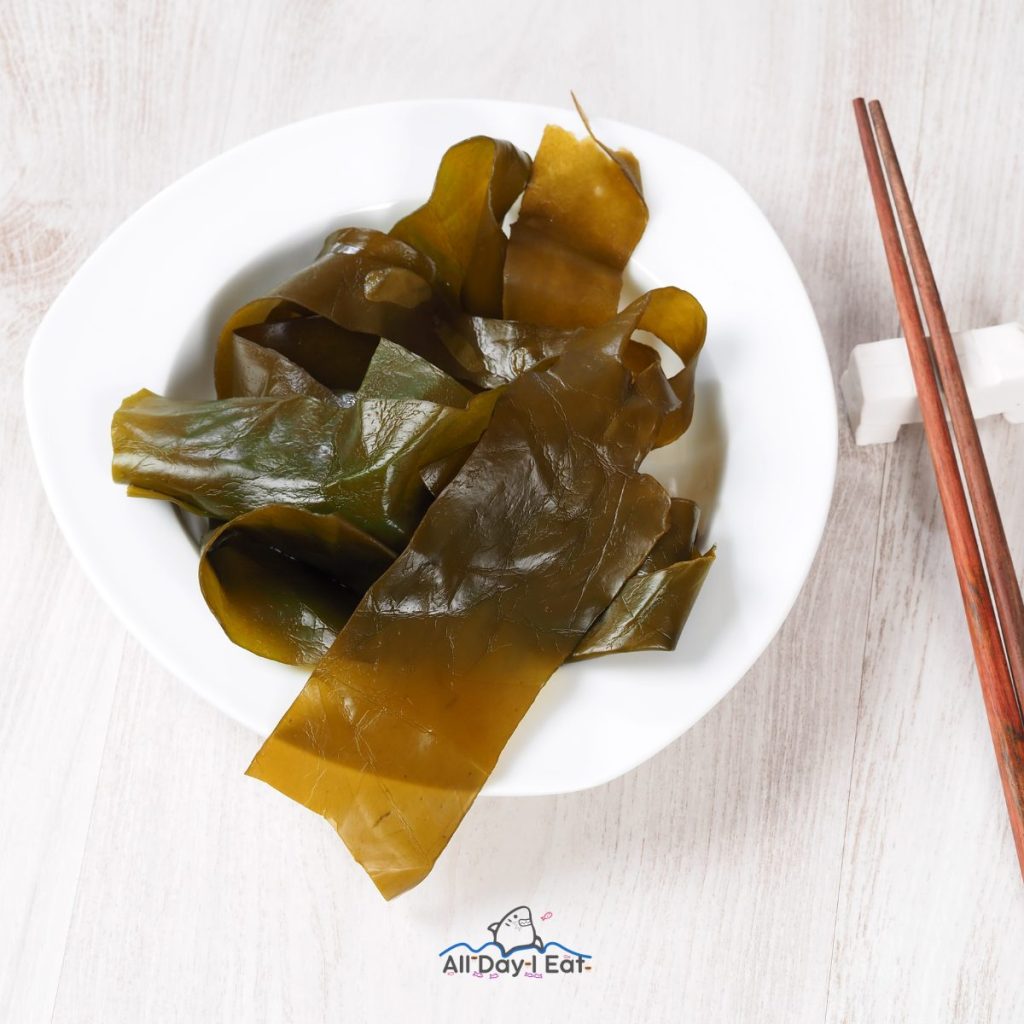
One type of seaweed that’s worth exploring is Kombu. Kombu, also known as kelp, is a popular ingredient in Japanese cuisine. It’s characterized by its thick, dark green blades and is commonly used to make dashi, a traditional Japanese soup stock.
Kombu is rich in minerals such as iodine, calcium, and potassium. It also contains vitamins A, C, and E and dietary fiber. Research suggests that consuming Kombu may have several health benefits, including supporting thyroid function and promoting heart health.
It’s important to note that while Kombu is generally safe to eat, individuals with thyroid disorders should consume it in moderation due to its high iodine content. Incorporating Kombu into your diet can be a nutritious and delicious way to explore the world of seaweed.
3. Wakame
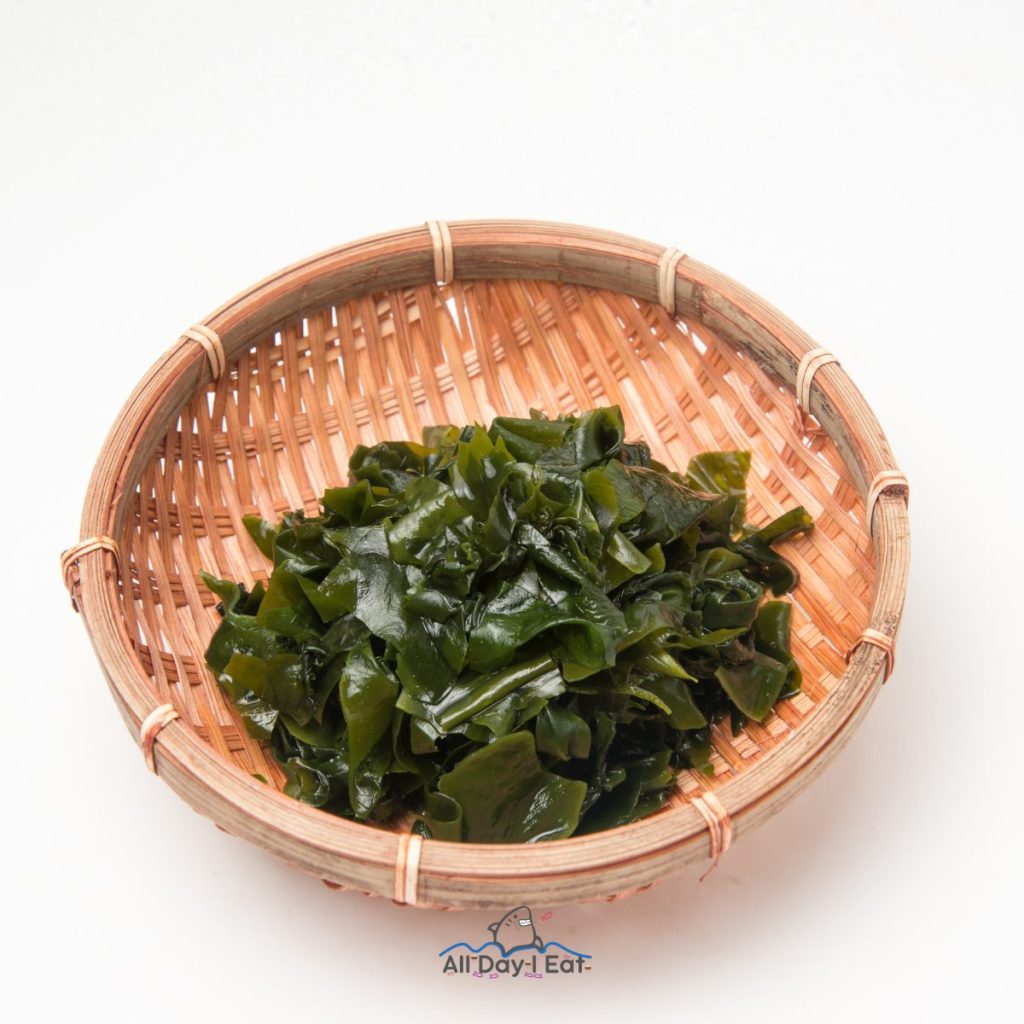
To continue exploring the world of seaweed, let’s dive into the nutritious benefits of incorporating wakame into your diet.
Wakame is a type of edible seaweed commonly used in Japanese cuisine. It’s rich in essential vitamins and minerals, including vitamin C, calcium, and iron. Vitamin C is an antioxidant that helps boost your immune system and protect against cellular damage. Calcium is crucial for maintaining strong bones and teeth. Iron is necessary for producing red blood cells and oxygen transportation.
Wakame is also a good source of dietary fiber, which aids digestion and promotes a healthy gut.
Additionally, it contains fucoidan, a type of carbohydrate that has been linked to potential anti-inflammatory and anti-cancer properties.
Including wakame in your diet can provide a flavorful and nutritious addition to your meals while offering various health benefits.
4. Dulse
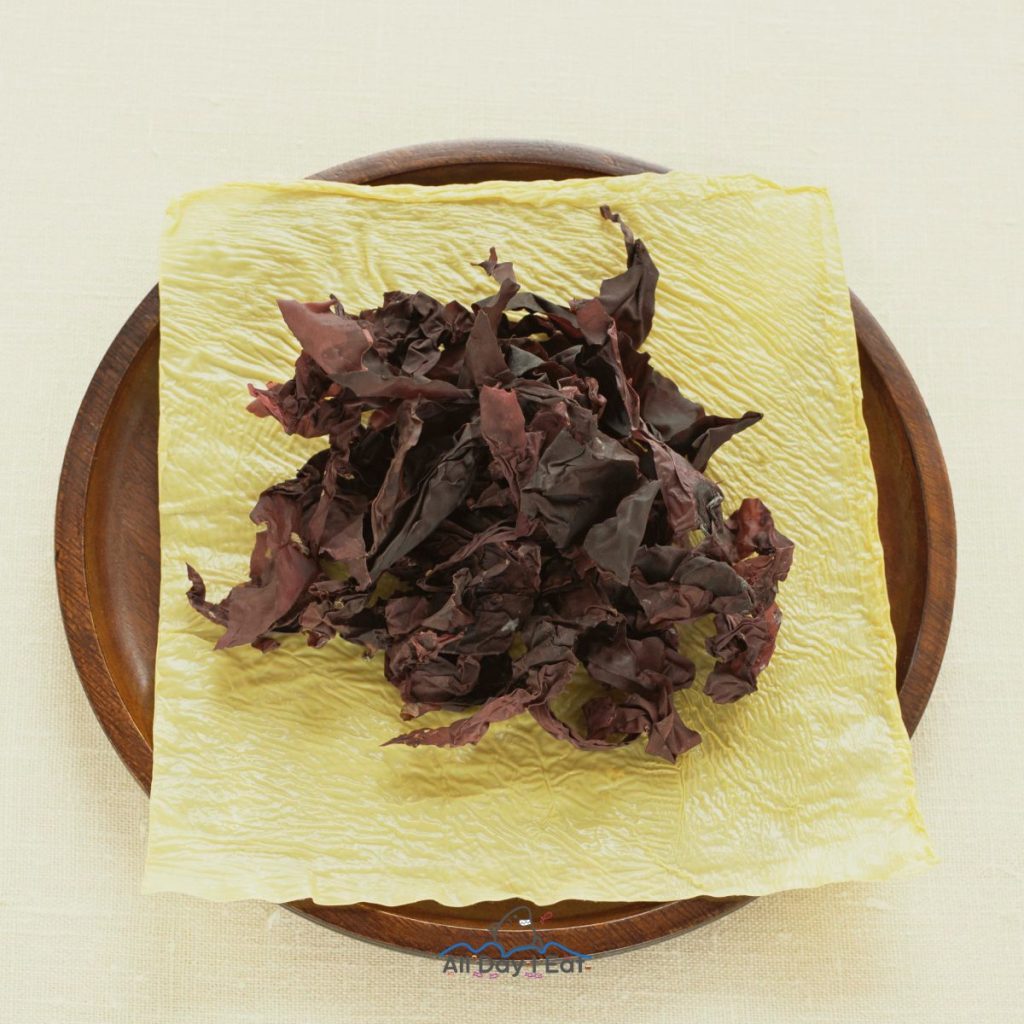
Now let’s explore the next type of edible seaweed in our discussion: dulse. Dulse, scientifically known as Palmaria palmata, is a red seaweed that grows along the northern coasts of the Atlantic and Pacific oceans. It has a distinct reddish-brown color and a delicate texture. Dulse has been consumed for centuries and is popular in various cuisines worldwide.
Here is a table highlighting the key characteristics of dulse:
| Characteristics | Details |
|---|---|
| Color | Reddish-brown |
| Texture | Delicate |
| Flavor | Salty and slightly smoky |
| Nutritional Benefits | High in vitamins, minerals, and antioxidants |
| Culinary Uses | Salads, soups, stir-fries, and as a snack |
Dulse is a nutritious addition to your diet, providing essential vitamins and minerals. Its unique flavor and texture make it a versatile ingredient in various dishes. Dulse offers a pleasantly salty and slightly smoky taste, whether raw or cooked. Consider incorporating dulse into your meals for a healthy and flavorful experience.
5. Hijiki
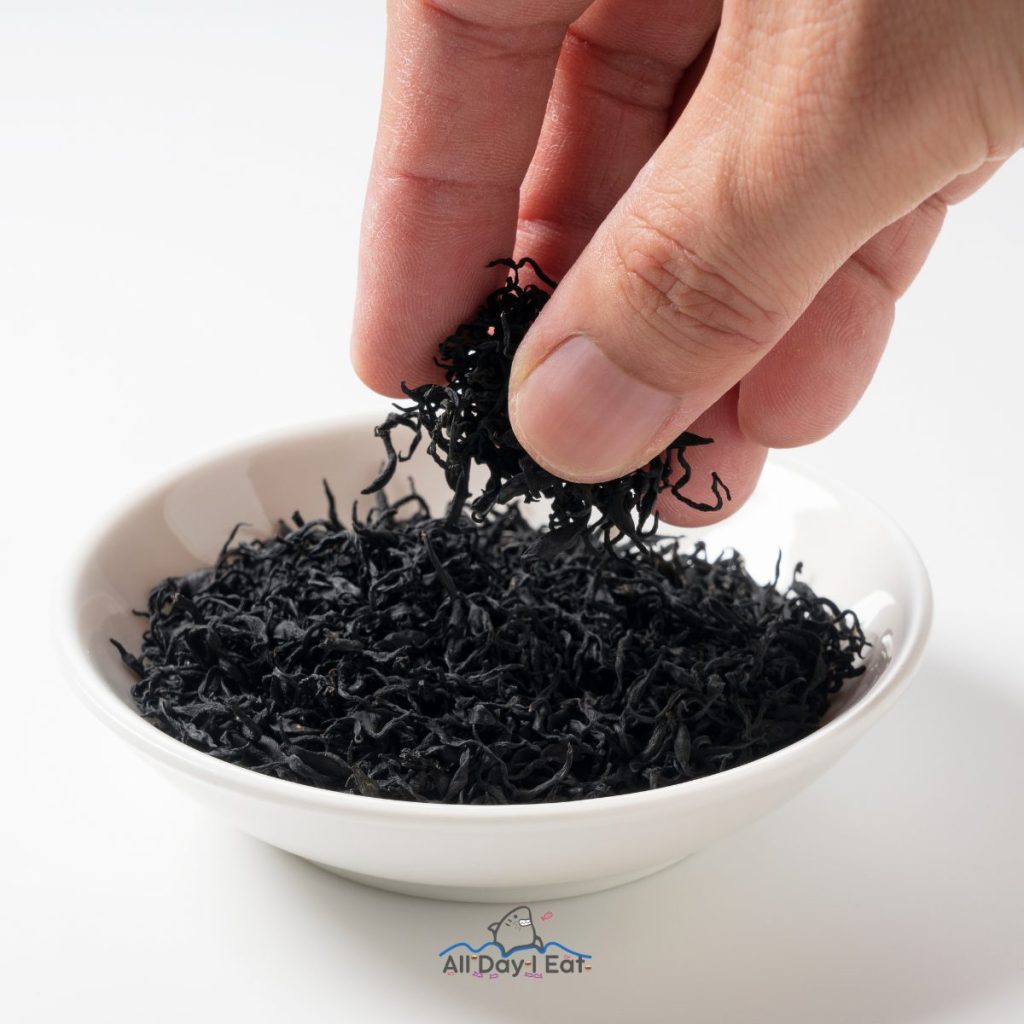
Explore the unique characteristics and culinary uses of hijiki, an edible seaweed.
Hijiki is a brown seaweed that’s native to the coastlines of Japan and Korea. It has a distinct appearance, with long, thin, usually black strands. Hijiki is slightly salty and earthy, making it a popular ingredient in Japanese cuisine.
Here are some interesting facts about hijiki:
Nutritional Benefits
- Hijiki is rich in minerals such as calcium, iron, and magnesium.
- It’s also a good source of dietary fiber and contains vitamins A, C, and E.



Konnichiwa! (Hello!) I'm Pat Tokuyama, a Japanese tofu cookbook author, who travels for music, food, and adventure. If you like Japanese tea, checkout some of the newestorganic japanese tea, matcha bowls and noren and more!
** Curious about the Plant Based Japanese Cooking Club? ** Learn more here!
Culinary Uses
- Hijiki can be used in various dishes, including salads, soups, and stir-fries.
- It’s often soaked and cooked before being added to recipes, as it has a firm texture and needs to be softened.




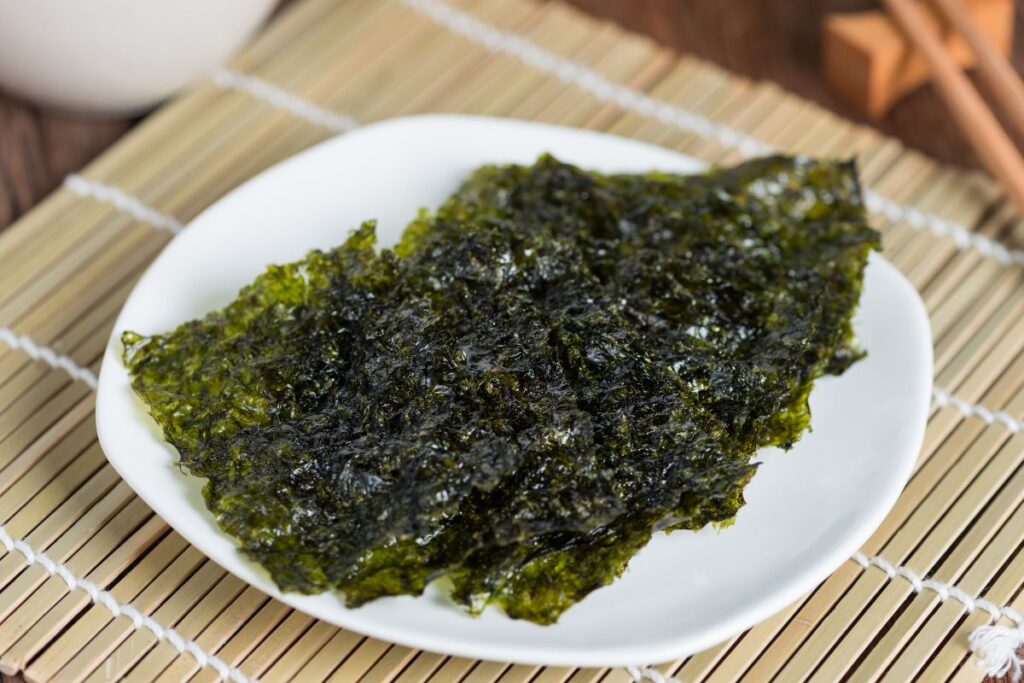
Konnichiwa! (Hello!) I'm Pat Tokuyama, a Japanese tofu cookbook author, who travels for music, food, and adventure. If you like Japanese tea, checkout some of the newestorganic japanese tea, matcha bowls and noren and more!
** Curious about the Plant Based Japanese Cooking Club? ** Learn more here!